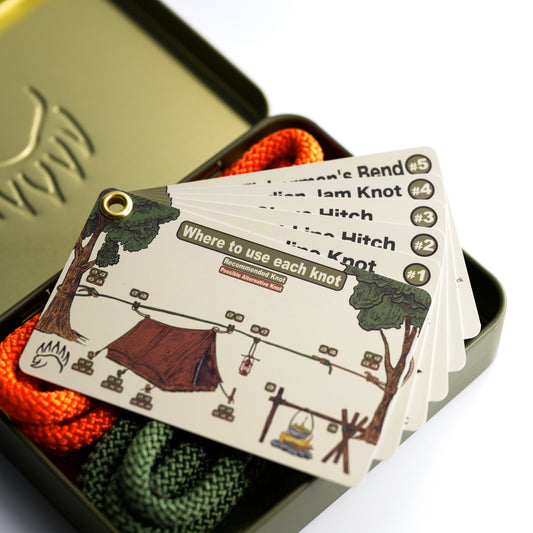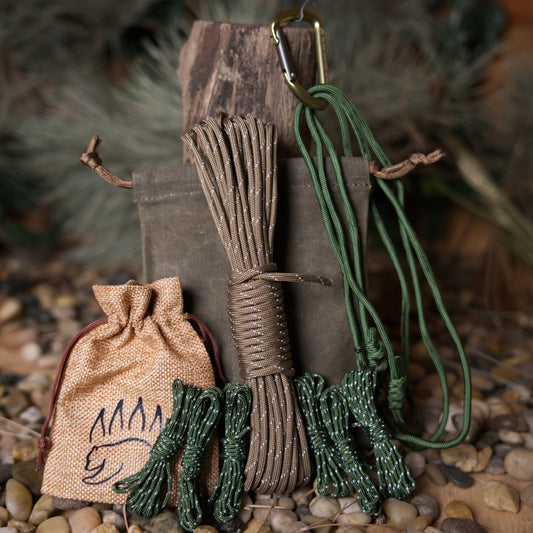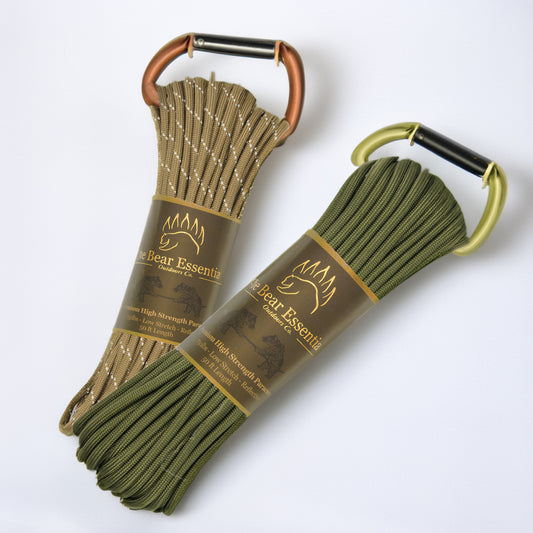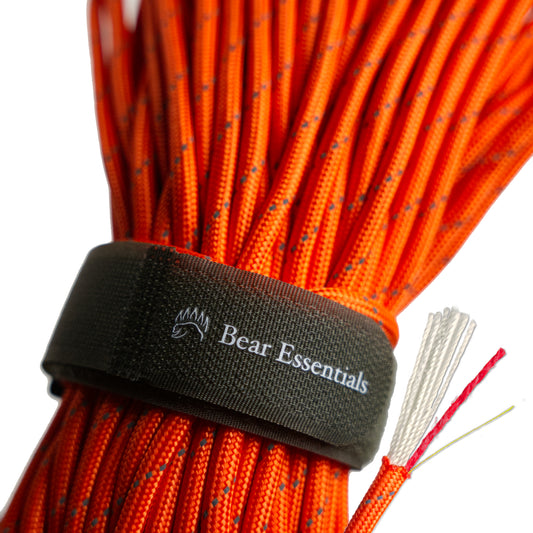How to Tie the Angler’s Loop (Perfection Loop)
Usage
Simply put, the Perfection Loop is a very quick and easy loop knot that isn't bulky.
Also called the Angler's Loop, it’s a highly reliable knot mainly used in fishing and outdoor scenarios. Whether you need to tie a small loop at the end of your fishing line or secure a loop at the end of your rope, this knot fits the bill.
You would use the Perfection Loop over the Bowline if you want a neater, more compact loop that aligns perfectly with the standing line (lays a bit more flat).
Why Learn the Perfection Loop?
If you need a quick end loop without the bulk, then this is a great one.
If you're into fishing and need a knot that forms a small, strong, and secure loop that’s easy to tie, the Perfection Loop (AKA. Angler’s Loop) is definitely the way to go.
It’s a great go-to for attaching leaders to fly lines or when you want a loop that will stay strong under tension.
This knot is compact, reliable, and versatile, making it a must-know for anglers, campers, and bushcrafters alike.
Common Uses
-
Fishing:
- Tying a loop on a tippet or leader.
- Creating a loop-to-loop connection.
- Tying a loop knot for a Dry Fly or Streamer.
- Securing your line to a hook, or lure.
-
Camping:
- Useful for creating end loops when setting up tents, tarps, or hanging gear.
-
Household:
- Creating loops in lines that need to stay tight but not bulky.
- Hanging tools in the garage, tying garden plants, or fastening seasonal items like outdoor lights.
ABOK Number
(Ashley Book of Knots)
Other Names
Type
Anchor/ End Loop Knots
|
Notable Features
- Strong and Secure: This knot tightens firmly and holds well under heavy tension.
- Versatile: Used in fishing, camping, and bushcraft.
- Slim Profile: The loop lies perfectly in line with the standing end of the line, reducing drag through guides.
Fishing-Specific Use
The Perfection Loop is especially popular in fly fishing, where it’s used to create a loop at the end of a leader or tippet. This allows for quick Loop-to-Loop connections, making it easier to switch out leaders. Its slim profile minimizes drag, and the loop aligns neatly with the standing line, ensuring smooth passage through the rod guides. When tying it, always lubricate the knot with water or saliva before tightening to prevent friction damage to the line and ensure the knot holds securely.
Similar Knots
Bowline Knot vs. Perfection Loop
- Advantage: Easy to untie after being loaded.
- Disadvantage: Bulkier and less secure.
Double Dragon vs. Perfection Loop
- Advantage: Stronger and easier to untie than the Perfection Loop.
- Disadvantage: Slightly more complex to tie.
Bimini Twist vs. Perfection Loop
- Advantage: Extremely strong.
- Disadvantage: More complex to tie.
Security Level
The Angler’s Loop is highly secure and particularly good when used with fishing lines or bungee cords. It tightens well and holds under tension, but it can be difficult to untie once loaded.
Downsides
- Difficult to Untie: This knot can jam and become hard to release once tightened under load.
- Bulkiness: Can cause friction when passing through rod guides, especially with smaller guides or thicker line.
History
The Perfection Loop has long been a go-to knot in fishing, though its exact historical origin isn’t clearly documented. It gained widespread popularity among anglers due to its strength, simplicity, and ability to form a neat, inline loop, especially useful for creating loop-to-loop connections in fly fishing. Over time, it found its way into other outdoor activities like camping and bushcraft because of its versatility and reliability. While it’s known today as a fishing staple, its practical uses have expanded into various outdoor applications.
FAQ
Why would someone tie the Perfection Loop over the Bowline?
It creates a neater, more compact loop that aligns perfectly with the standing line, making it ideal for fishing.
What is the best use for the Angler's Loop in fishing?
It’s ideal for creating a small loop at the end of a tippet or leader for a loop-to-loop connection, making it easy to switch out leaders.
How can I untie the Angler’s Loop after it’s been loaded?
Unfortunately, this knot tends to jam badly after heavy loads, so it’s not ideal for situations where frequent untying is required.
Important Notes on Safety
Always ensure your knots are tied properly. In fishing, a poorly tied knot can result in lost gear or fish. For best results, lubricate the line before tightening and practice the knot regularly to improve speed and reliability.









